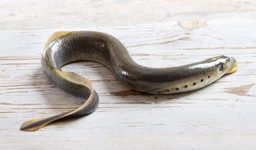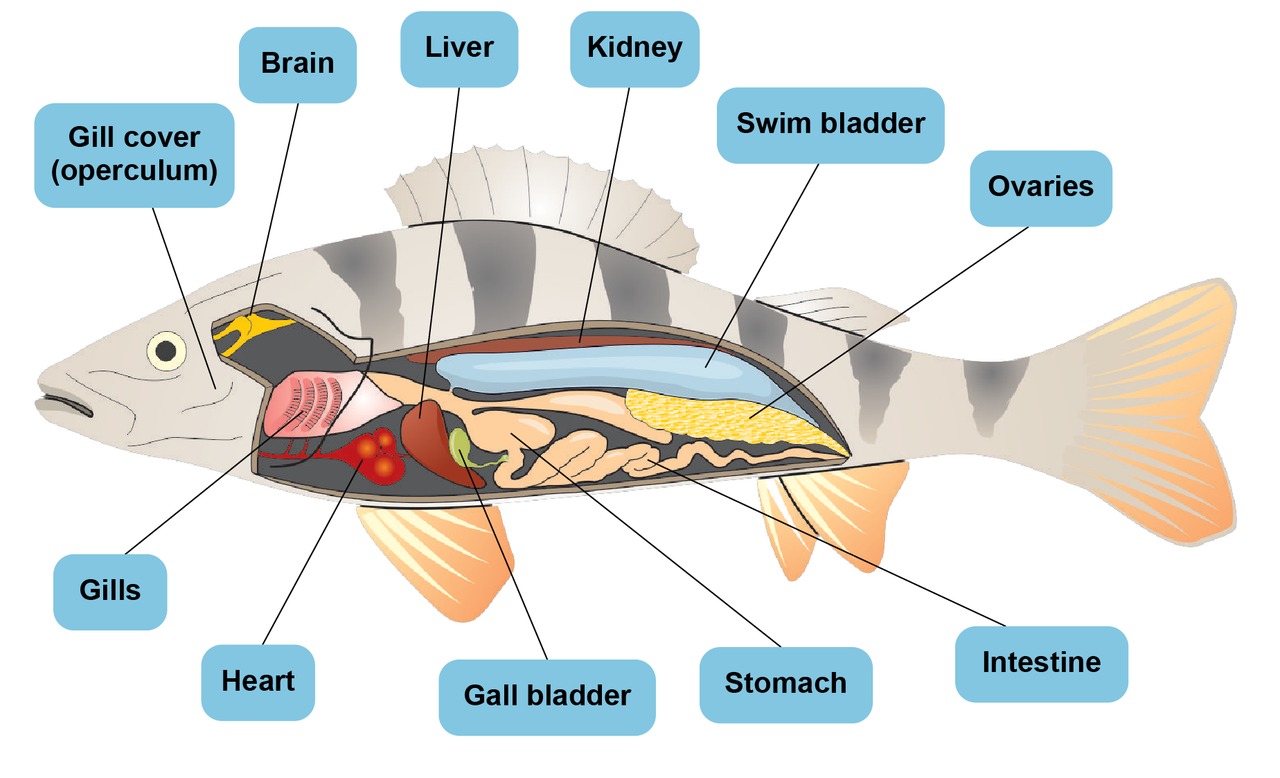7. Fish
Contents
7.1 Fascinating fish
Fish have a number of adaptations that make them suitable for aquatic life. Adaptations are characteristics that make the animal able to live in its environment, for example under water. Gills are an important adaptation for fish. Fish use their gills to "breathe" oxygen under water: fish gather oxygen directly from the water and remove carbon dioxide from their systems with their gills.
 Fish have adapted to aquatic life.
Fish have adapted to aquatic life.7.2 The internal structure of a fish
7.3 Fish reproduction
 The process of fish reproduction is called spawning. It requires male fish sperm, or milt, and female fish eggs, or roe. The process of spawning involves females releasing ova (unfertilized eggs) into the water, while males simultaneously release sperm cells (milt) to fertilize the eggs. This process is known as external fertilization, as it does not take place inside the female fish.
The process of fish reproduction is called spawning. It requires male fish sperm, or milt, and female fish eggs, or roe. The process of spawning involves females releasing ova (unfertilized eggs) into the water, while males simultaneously release sperm cells (milt) to fertilize the eggs. This process is known as external fertilization, as it does not take place inside the female fish.
Depending on the species, the development of fertilized eggs into fish takes from a few days to several months. The eggs develop and hatch into larvae (baby fish) without any help from the parents.
The larvae are not able to feed themselves, and carry a yolk-sac which provides their nutrition. Before the yolk-sac completely disappears, the tiny fish must become capable of feeding themselves.

Left: Fertilized eggs. Right: Hatched salmon larva. It gets its energy from a yolk-sac.
7.4 Fish and their varied diets
When a young fish has used up all of the nutrition from its yolk-sac, it has to start consuming zooplankton. Aquatic invertebrates slightly larger than zooplankton are also an important source of food for small fish. These invertebrates comprise the diet for many species of fish even as adults. Such invertebrate-consuming fish species include all small-sized species, such as small cyprinids like the common roach. Some larger species of fish also eat invertebrates. For example, the common bream likes to feed on insect larvae it finds near the bottom of the water.

The common roach.
Many species fish eat other fish. They are considered predators. The pike is an excellent example of a predator fish. It has a large mouth, sharp teeth, and it is lightning-quick. Perch become predators when they grow over 15 cm long.
Salmon and trout are likewise predators. They become predators once they move away from their birth locations to dwell in the sea or in lakes. Once there, they begin hunting for smaller fishes, such as herring.

The pike is a predator.
7.5 Gallery - Fish species

Shutterstock.com

Shutterstock.com

www.shutterstock.com - kuvan käyttö sallittu vain osana e-Oppi Oy:n oppimateriaalia.

www.shutterstock.com - kuvan käyttö sallittu vain osana e-Oppi Oy:n oppimateriaalia.

www.shutterstock.com - kuvan käyttö sallittu vain osana e-Oppi Oy:n oppimateriaalia.

www.shutterstock.com

Shutterstock.com

www.shutterstock.com

www.shutterstock.com

Justine Wild/Shutterstock.com

Shutterstock.com

www.shutterstock.com - kuvan käyttö sallittu vain osana e-Oppi Oy:n oppimateriaalia.

www.shutterstock.com

www.shutterstock.com

www.shutterstock.com - kuvan käyttö sallittu vain osana e-Oppi Oy:n oppimateriaalia.

www.shutterstock.com

